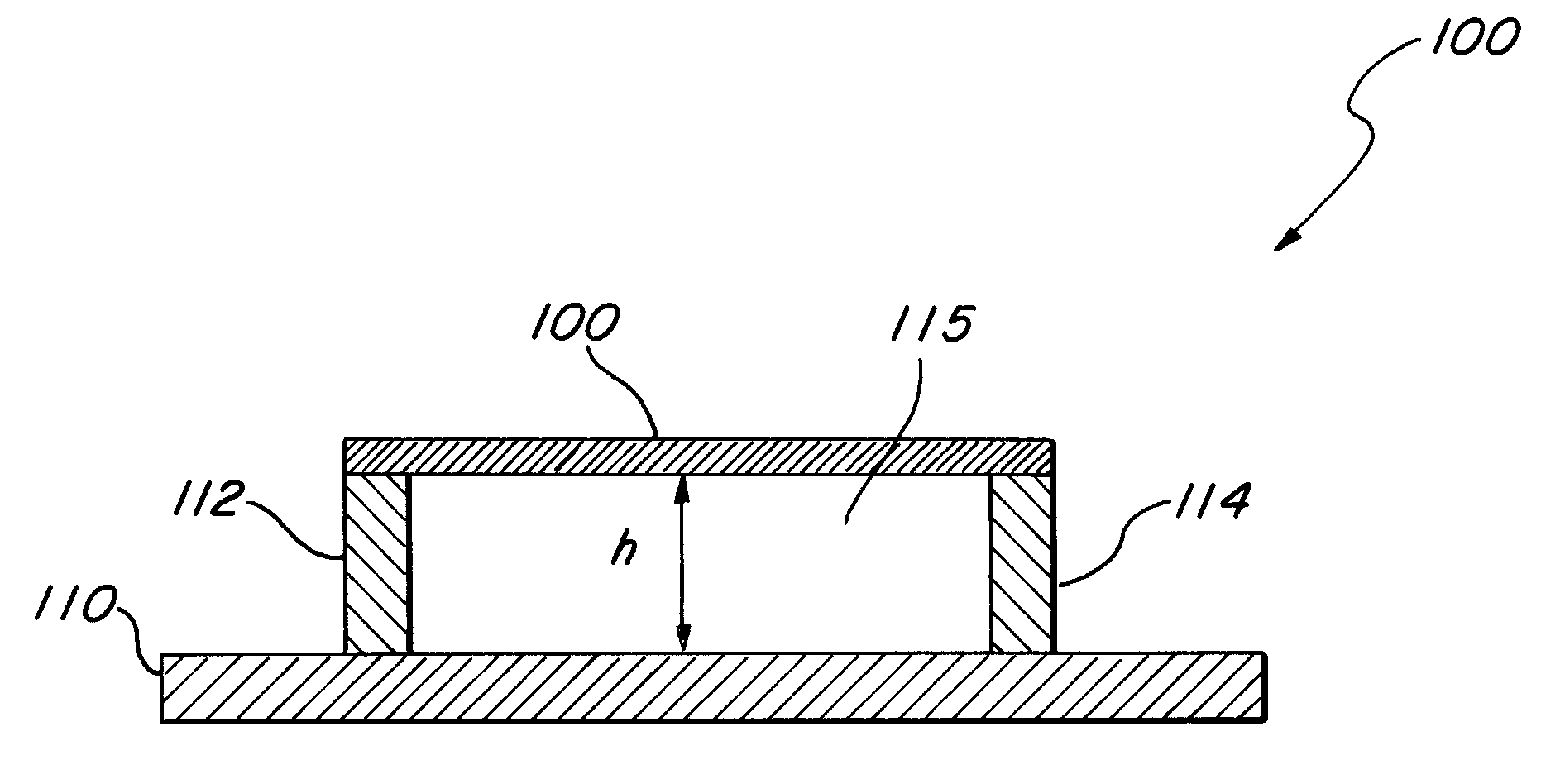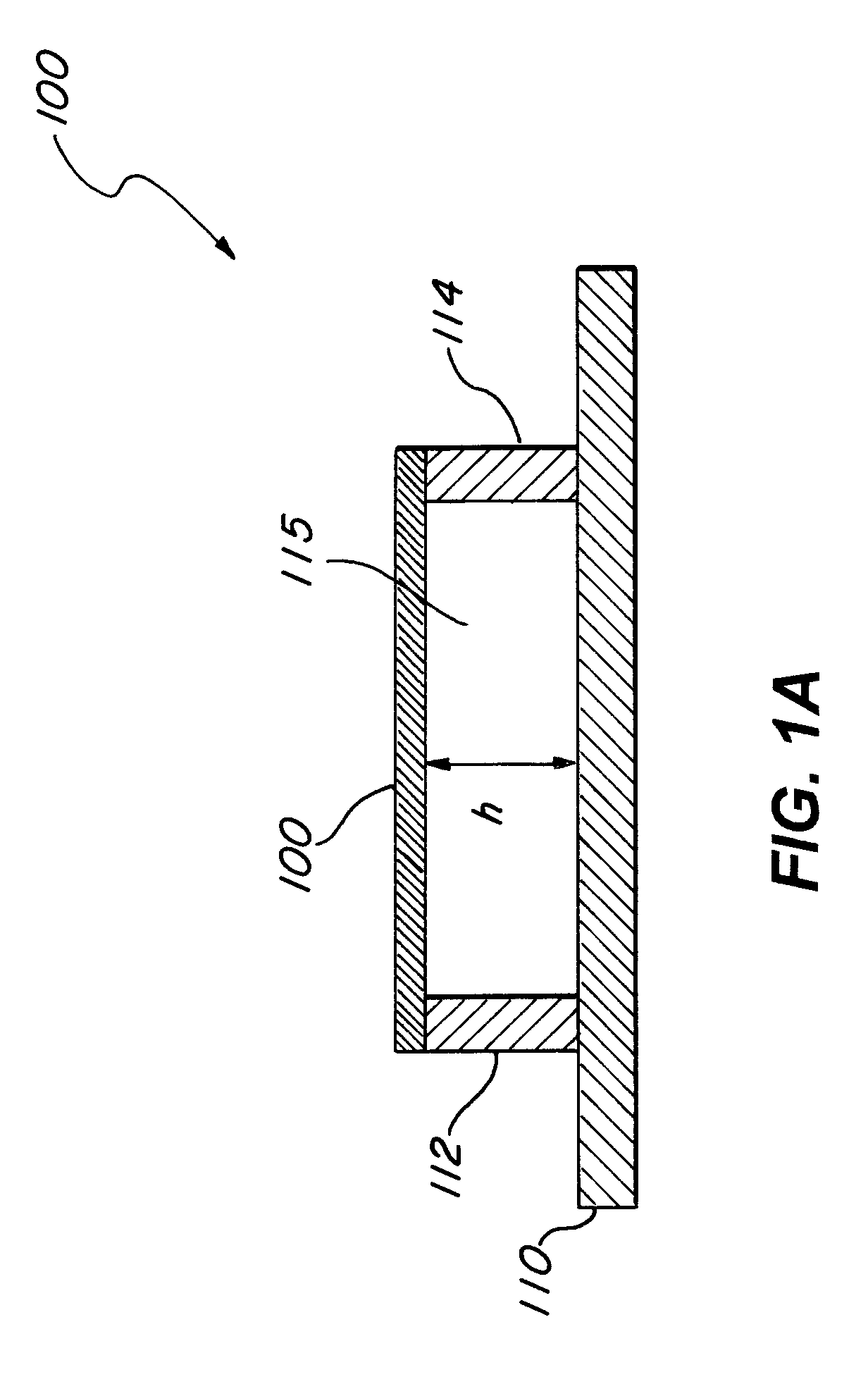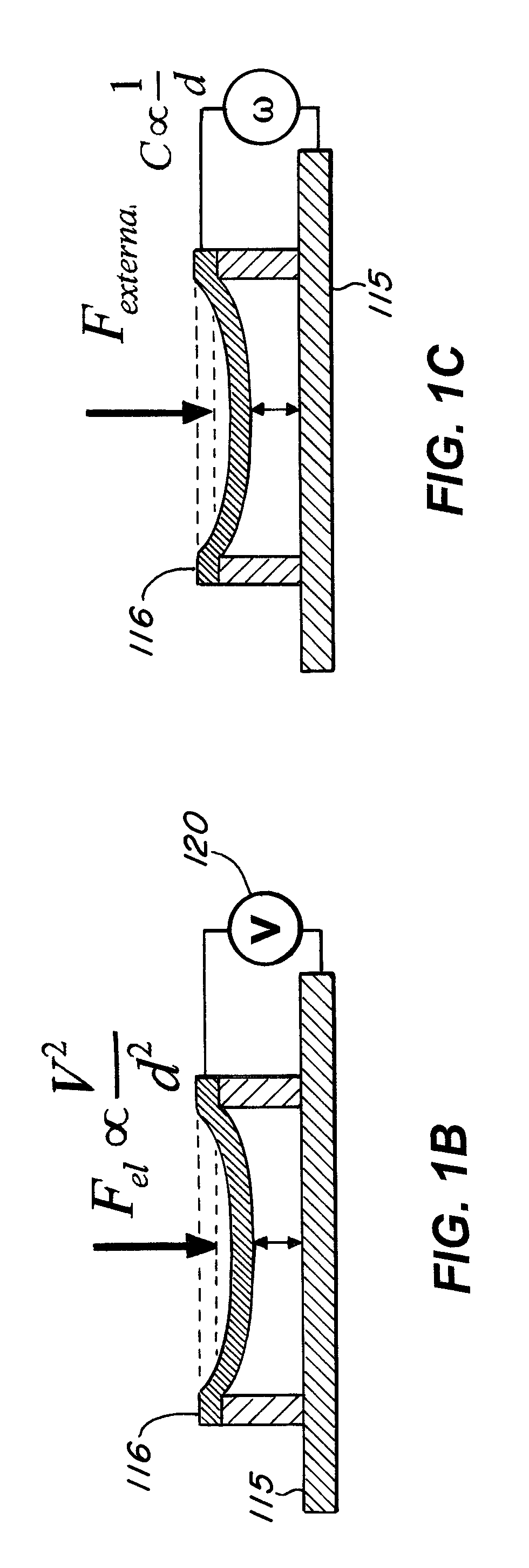Method And Apparatus for Microcontact Printing of MEMS
- Summary
- Abstract
- Description
- Claims
- Application Information
AI Technical Summary
Benefits of technology
Problems solved by technology
Method used
Image
Examples
Embodiment Construction
[0038]FIG. 1A is a schematic representation of a conventional MEMS device. MEMS 100 includes substrate 110 having supports 112 and 114. Supports 112 and 114 can be viewed as a plurality of ridges separated by gap 115. Supports 112 and 114 uphold layer 116. Gap 115 is defined by the separation distance between ridges 112 and by the height (h). Conventionally, layer 116 is defined by a metal layer and MEMS structure 100 is formed through photolithography as described above. As stated, the conventional processes lacked ability to produce MEMS devices over large areas and on flexible substrates.
[0039]FIG. 1B shows an application of the MEMS device of FIG. 1A used as an actuator. In FIG. 1B, structure 100 is connected to voltage source 120 through substrate 115 and diaphragm 116 which act as electrodes. The bias provided by voltage source 120 creates an electrostatic force between electrode 115 and layer 116, causing the latter to act as a diaphragm by deflecting towards electrode 115. T...
PUM
| Property | Measurement | Unit |
|---|---|---|
| Length | aaaaa | aaaaa |
| Speed | aaaaa | aaaaa |
| Speed | aaaaa | aaaaa |
Abstract
Description
Claims
Application Information
 Login to View More
Login to View More - R&D
- Intellectual Property
- Life Sciences
- Materials
- Tech Scout
- Unparalleled Data Quality
- Higher Quality Content
- 60% Fewer Hallucinations
Browse by: Latest US Patents, China's latest patents, Technical Efficacy Thesaurus, Application Domain, Technology Topic, Popular Technical Reports.
© 2025 PatSnap. All rights reserved.Legal|Privacy policy|Modern Slavery Act Transparency Statement|Sitemap|About US| Contact US: help@patsnap.com



